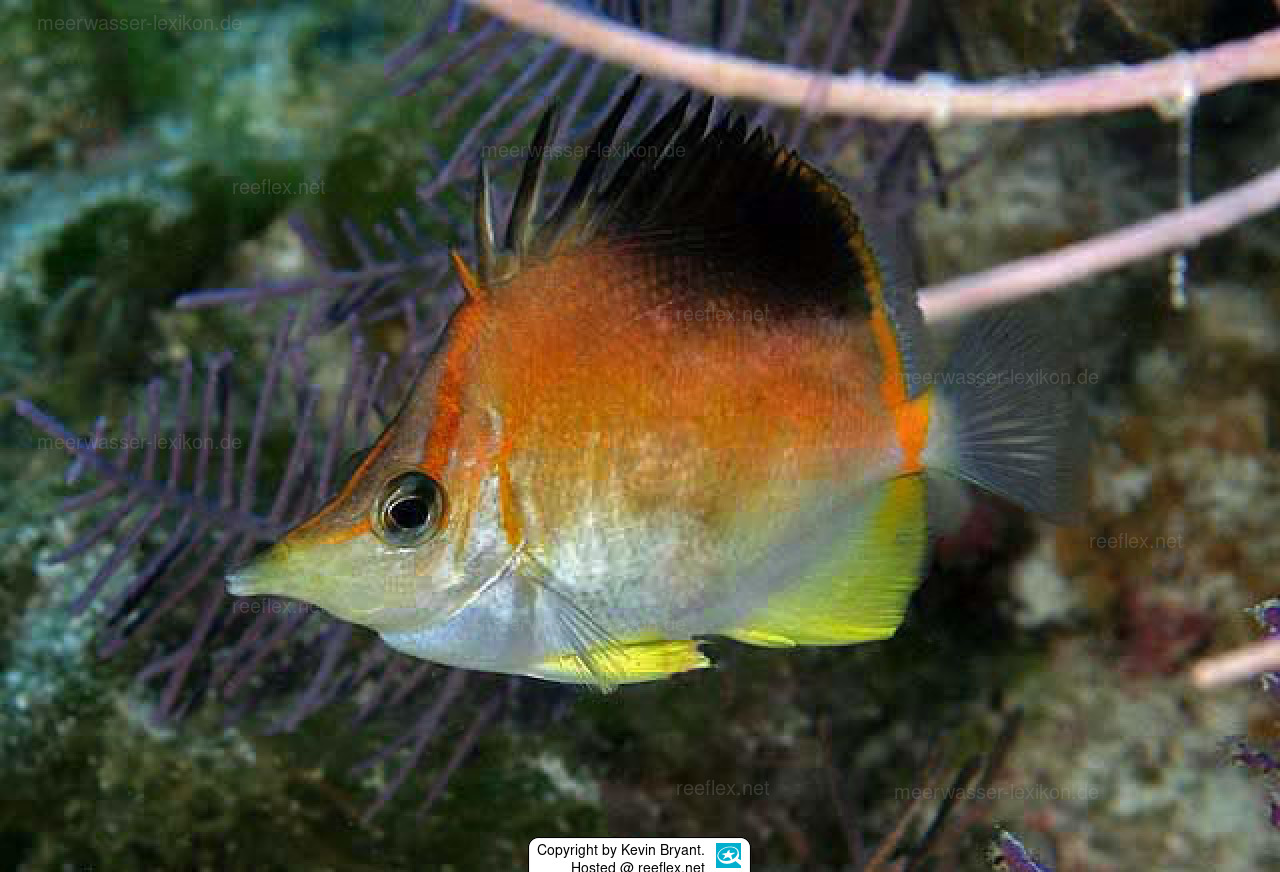Info
Prognathodes aculeatus also commonly referred as Longsnout butterflyfish is distibuted from Southern Florida, the Bahamas and the Gulf of Mexico, along the Caribbean Island arc to the northern coast of South America.
Also recorded from Bermuda.
(Poey, 1860)
Prognathodes aculeatus upper body is yellow-orange and becoming dark brown in dorsal fin, the lower body and head is whitish. It has a brownish eyeband above eye, continuing as yellow-orange stripe from eye to the upper edge of snout; a median snout stripe is present. An orange stripe extends through soft dorsal fin and crosses caudal peduncle; orange stripe along upper posterior edge of opercle present. The ventral and anal fins are yellow. Caudal and pectoral fins hyaline.
The Longsnout butterflyfish inhabits moderate to deep tropical waters around reef or rocky areas. Occurs most abundantly at 15 to 55 m, but has been found from 1 m to at least 100 m depth. His elongate snout is used for selecting small benthic invertebrates from coral and rock crevices and between sea urchin spines.
Synonyms:
Chaetodon aculeatus (Poey, 1860)
Chaetodon unicolor Sauvage, 1880
Chelmo pelta Günther, 1860
Chelmon aculeatus Poey, 1860
Classification: Biota > Animalia (Kingdom) > Chordata (Phylum) > Vertebrata (Subphylum) > Gnathostomata (Superclass) > Pisces (Superclass) > Actinopterygii (Class) > Perciformes (Order) > Chaetodontidae (Family) > Prognathodes (Genus) > Prognathodes aculeatus (Species)
Also recorded from Bermuda.
(Poey, 1860)
Prognathodes aculeatus upper body is yellow-orange and becoming dark brown in dorsal fin, the lower body and head is whitish. It has a brownish eyeband above eye, continuing as yellow-orange stripe from eye to the upper edge of snout; a median snout stripe is present. An orange stripe extends through soft dorsal fin and crosses caudal peduncle; orange stripe along upper posterior edge of opercle present. The ventral and anal fins are yellow. Caudal and pectoral fins hyaline.
The Longsnout butterflyfish inhabits moderate to deep tropical waters around reef or rocky areas. Occurs most abundantly at 15 to 55 m, but has been found from 1 m to at least 100 m depth. His elongate snout is used for selecting small benthic invertebrates from coral and rock crevices and between sea urchin spines.
Synonyms:
Chaetodon aculeatus (Poey, 1860)
Chaetodon unicolor Sauvage, 1880
Chelmo pelta Günther, 1860
Chelmon aculeatus Poey, 1860
Classification: Biota > Animalia (Kingdom) > Chordata (Phylum) > Vertebrata (Subphylum) > Gnathostomata (Superclass) > Pisces (Superclass) > Actinopterygii (Class) > Perciformes (Order) > Chaetodontidae (Family) > Prognathodes (Genus) > Prognathodes aculeatus (Species)







 Kevin Bryant, USA
Kevin Bryant, USA






















